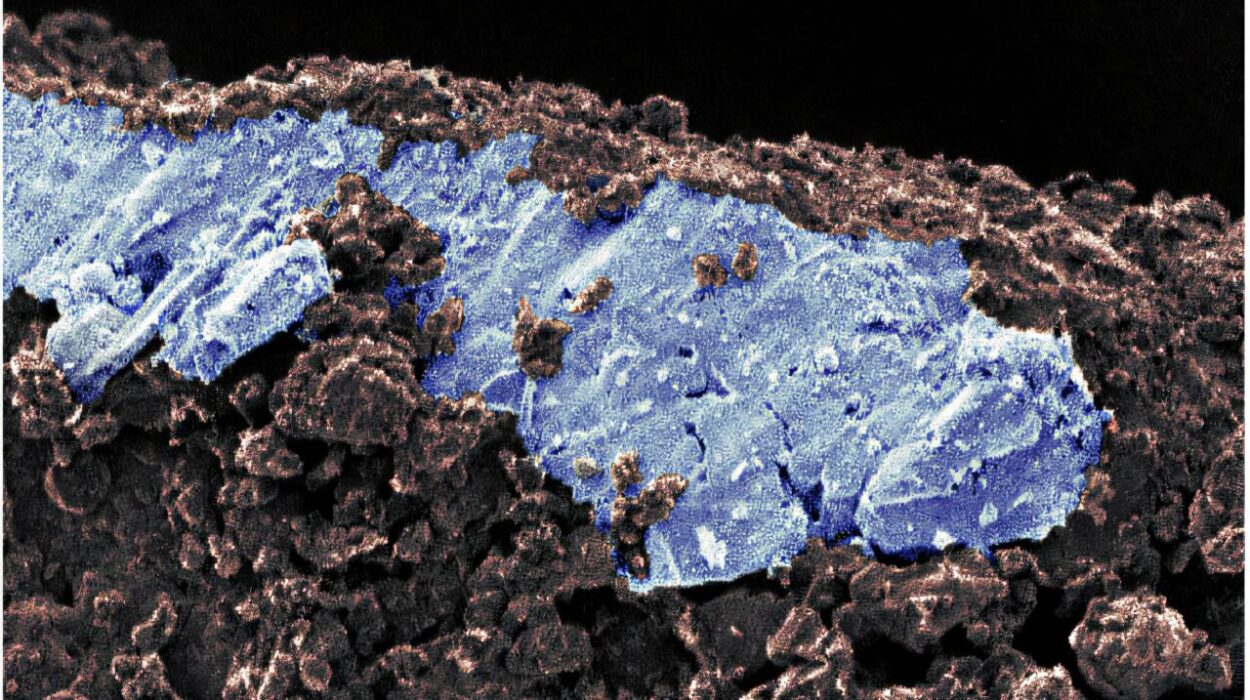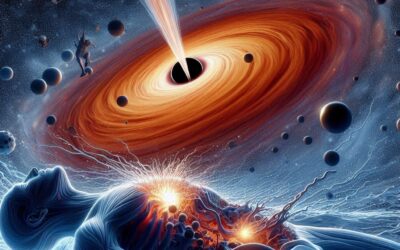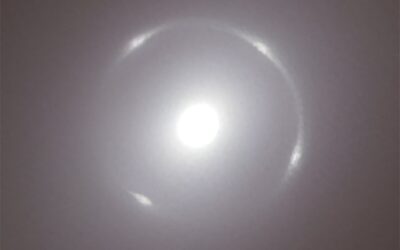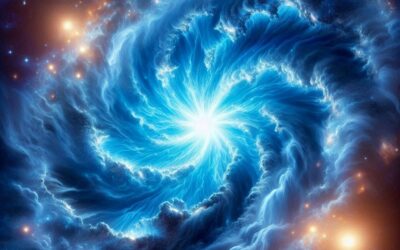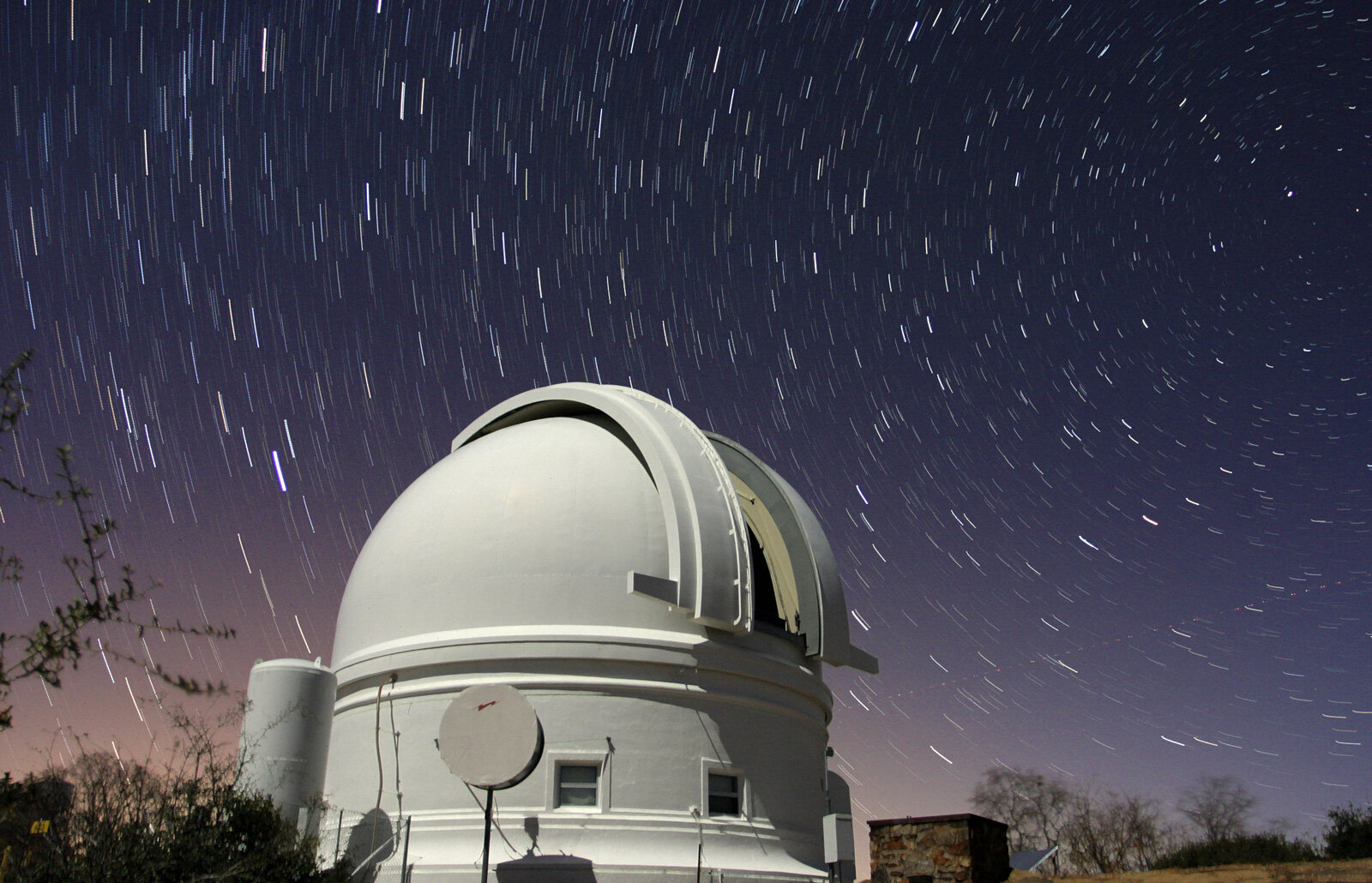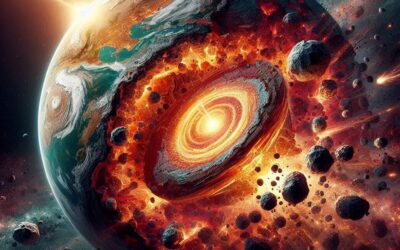Asteroids that orbit in close proximity to Earth often elicit a sense of anxiety, primarily due to the faint yet present risk of a collision. However, the close vicinity of these celestial bodies presents invaluable opportunities for scientific discovery, particularly in the realm of planetary science. One such asteroid, Ryugu, has recently become the focus of significant research, providing scientists with remarkable insights into the potential for life’s precursors in our solar system.
Ryugu, a roughly 900-meter-wide asteroid located within the Apollo asteroid group, has yielded groundbreaking information thanks to the ongoing Hayabusa2 mission. Launched by the Japan Aerospace Exploration Agency (JAXA), the Hayabusa2 spacecraft successfully landed on Ryugu in 2018 and collected samples from the asteroid’s surface. After returning to Earth in late 2020, these samples have allowed researchers to analyze the asteroid’s composition and to investigate the chemical processes that may have occurred within its parent body.
A significant discovery came from a team of researchers at Kyoto University, who found compelling evidence of salt minerals in the samples collected from Ryugu. Among the identified minerals were sodium carbonate, halite (commonly known as rock salt), and sodium sulfates. These findings are not only fascinating in their own right but also provide tantalizing evidence of liquid saline water once being present within Ryugu’s parent body.
The implications of these findings are profound. Before the samples were even analyzed, the Kyoto University team hypothesized that the asteroid’s grains might contain rare substances not typically found in meteorites. Specifically, they expected to discover materials that are highly water-soluble and would have reacted with Earth’s atmosphere if not carefully preserved. These materials would be difficult to detect unless preserved in their pristine state—shielded from moisture and contamination, as they were in the vacuum of space.
According to Toru Matsumoto, the corresponding researcher on the project, the careful handling of the asteroid samples allowed them to identify the delicate salt minerals, offering an unprecedented opportunity to glimpse the chemical history of Ryugu. These minerals suggest that Ryugu’s parent body was once a much larger celestial object that existed around 4.5 billion years ago, soon after the formation of the solar system. During this early period, the parent body of Ryugu likely experienced heat from radioactive decay, which would have created an environment where liquid water existed at temperatures below 100°C—conditions conducive to the formation of saline water.
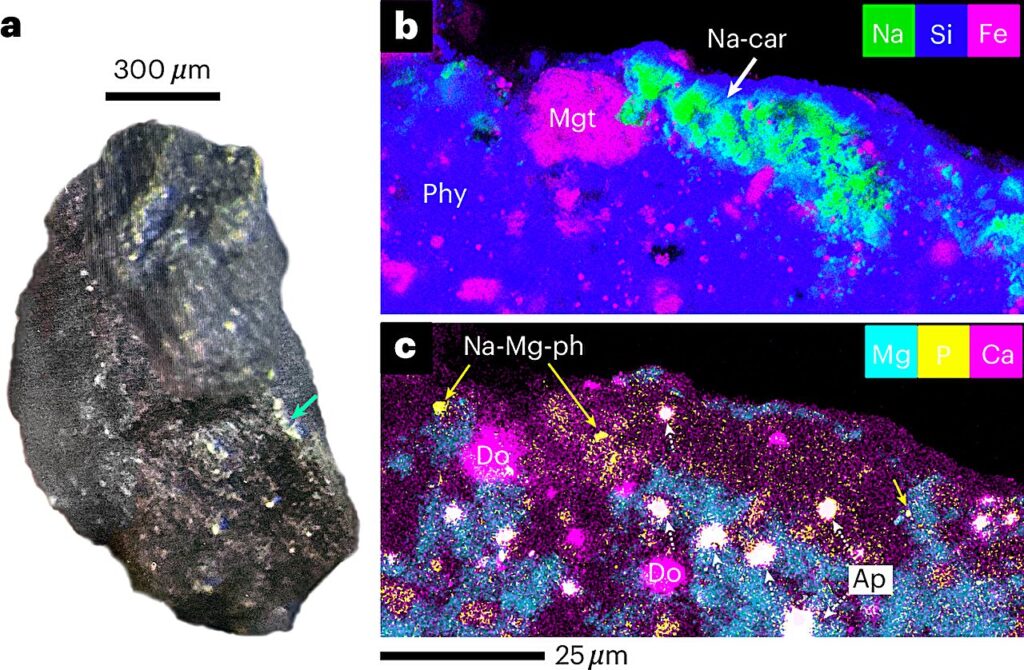
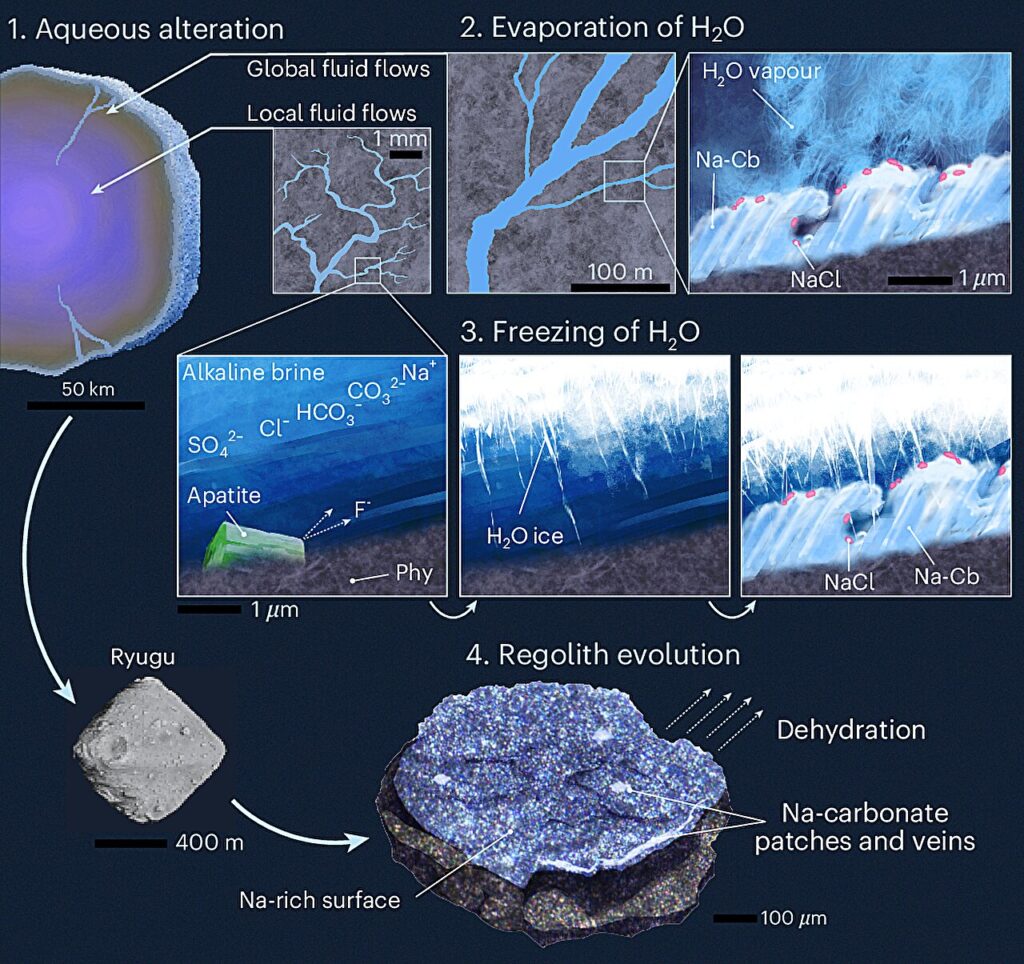
Although the Ryugu samples did not contain liquid water, the presence of these salt minerals implies that water was once present within the parent body. Scientists speculate that the salt crystals found in the samples are the result of evaporation or freezing of water that once existed within the asteroid’s parent body. In the absence of liquid water, these salts would have precipitated, crystallizing over time.
Matsumoto and his team hypothesize that as fractures exposed the saltwater to space, or as the parent body cooled, the remaining liquid could have either evaporated or frozen, leaving behind these crystalline remnants. The research team also highlights that salt crystals dissolve easily in water, making it clear that they could only have formed in highly saline liquid and under conditions where the available water was limited in volume.
This discovery has potential implications far beyond Ryugu. The salt deposits found in the asteroid’s samples provide a key comparison point for similar findings in other bodies within our solar system. Ceres, the largest object in the asteroid belt, is known to harbor salt deposits on its surface, particularly around its dawn region, where scientists believe there are subsurface liquid oceans. The presence of sodium salts in Ryugu could offer valuable insight into the processes that might occur in other icy bodies, such as the moons of Jupiter and Saturn, many of which are suspected of containing subsurface liquid reservoirs.
For instance, Enceladus, a moon of Saturn, has been observed spewing water plumes containing salt and organic molecules, while Europa and Ganymede, two of Jupiter’s moons, have long been thought to contain subsurface oceans beneath their icy crusts. The discovery of sodium carbonate and halite in Ryugu’s samples presents an intriguing parallel to these bodies, suggesting that similar processes may have occurred throughout the solar system. These salts could serve as a fingerprint of ancient water chemistry, providing a comparative tool for studying the evolution of aqueous environments in the outer solar system.
The analysis of these salts also offers important clues about the geological settings and the brine chemistry of various celestial bodies. Salt production is closely linked to the conditions in which briny liquids form, evaporate, and precipitate over time. In this regard, Ryugu’s salt deposits provide valuable information for scientists studying how water may have interacted with other planetary bodies, shedding light on their potential to harbor life or support conditions suitable for life.
The findings from Ryugu offer an exciting glimpse into the ancient history of our solar system, particularly concerning the role that water may have played in the formation and evolution of asteroids and planets. The minerals identified in the asteroid’s samples suggest that Ryugu’s parent body may have experienced conditions similar to those that existed on early Earth, raising intriguing questions about the possibility of life’s precursors existing in other parts of the solar system.
While much is still unknown about the fate of the liquid water on Ryugu’s parent body, the discovery of these salt minerals represents a significant step forward in our understanding of the conditions that may have existed on early planetary bodies. More broadly, the findings support the hypothesis that the ingredients for life—water, organic molecules, and chemical energy—may have been present in the building blocks of the solar system, potentially seeding the development of life on Earth and elsewhere.
As our exploration of the cosmos continues, missions like Hayabusa2 offer invaluable opportunities to study asteroids up close, providing firsthand data about the materials that shaped the early solar system. Through these efforts, we gain a deeper understanding of the chemical processes that have played a crucial role in the development of planets, moons, and the very potential for life across the universe.
More information: Toru Matsumoto et al, Sodium carbonates on Ryugu as evidence of highly saline water in the outer Solar System, Nature Astronomy (2024). DOI: 10.1038/s41550-024-02418-1
